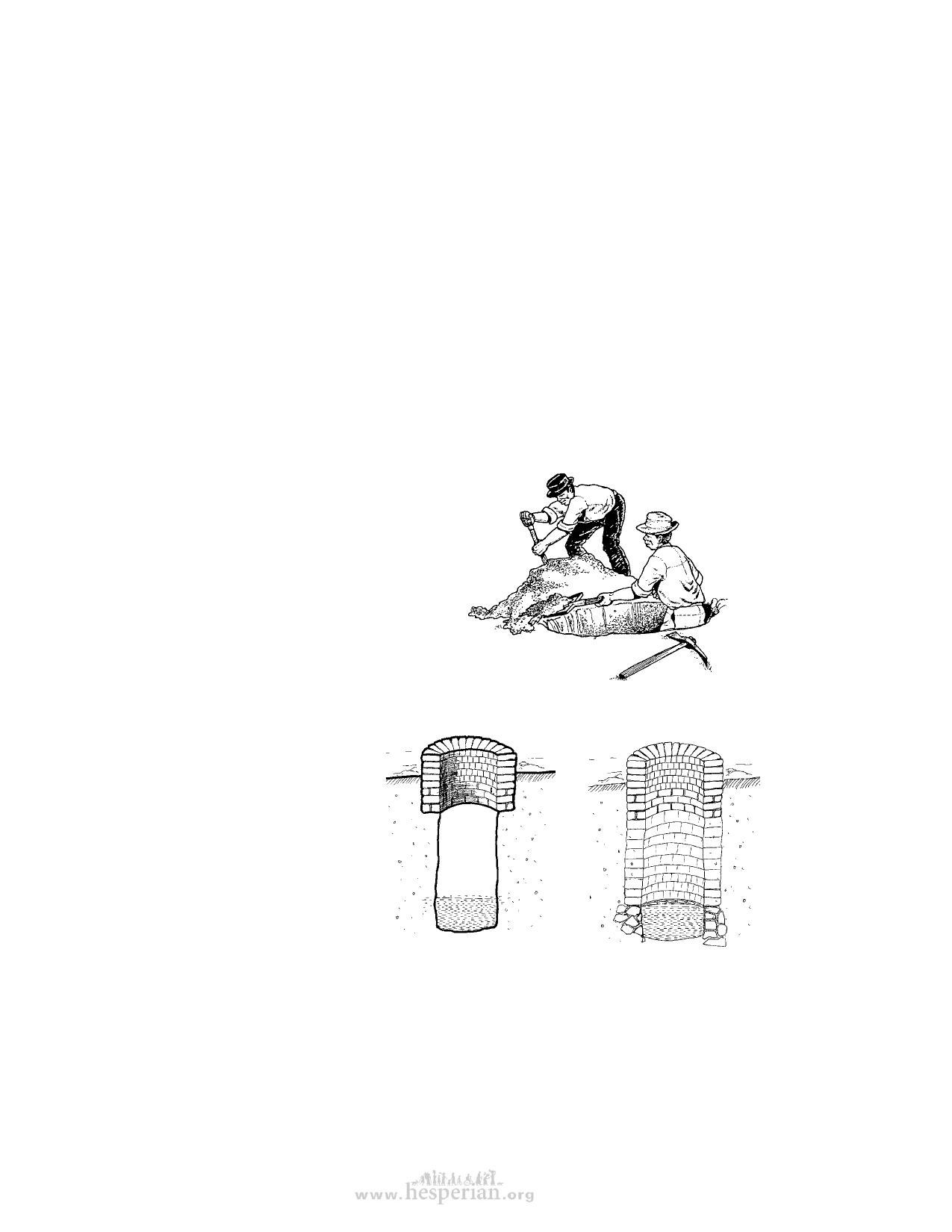
24 Water for Life
The protected family well
Many communities have tubewells built for them by governments and international
agencies. One reason for making these wells is to better protect the water from
contamination by people and animals. But 4 to 5 years after they are drilled, many of
these wells can no longer be used because the pumps break, spare parts are no longer
available, or the people who can fix them are gone. This can lead to water insecurity.
In some parts of Africa, tubewells are now being replaced by “protected family wells”
that protect water quality and ensure water security.
Where to dig a well
The best sign that there will be water is other wells nearby. But if they are deep
boreholes this may mean the groundwater is too deep to get to by hand digging.
Another good sign is the year-round presence of plants that need a lot of water to
survive. Low areas are more likely to have water than higher ground. But if a well is
dug in a low area it will need to be protected from rainwater runoff.
To make a protected family well
A protected well has a lining, a concrete
cover slab, a windlass, and a drainage
platform. Each one of these things adds
some measure of protection to the
well. With all of them in place, and with
careful handling of the water, a well can
be considered very safe.
Digging a well and making a lining is
difficult and dangerous. It is best done
by trained and experienced well diggers.
The well lining
Traditional wells often have
no lining. In very firm soils,
lining the well may seem
unnecessary. But it is wise
to line at least the top 1½ to
2 meters below ground to
prevent the side walls from
collapsing. If the entire well is
lined, it will make the water
source more dependable,
but it will be more difficult to
dig the well deeper at a later
time. A well can be lined with
stones or rocks, with fired
bricks, or with concrete.
Top 1 ½ to 2 meters lined
Fully lined well